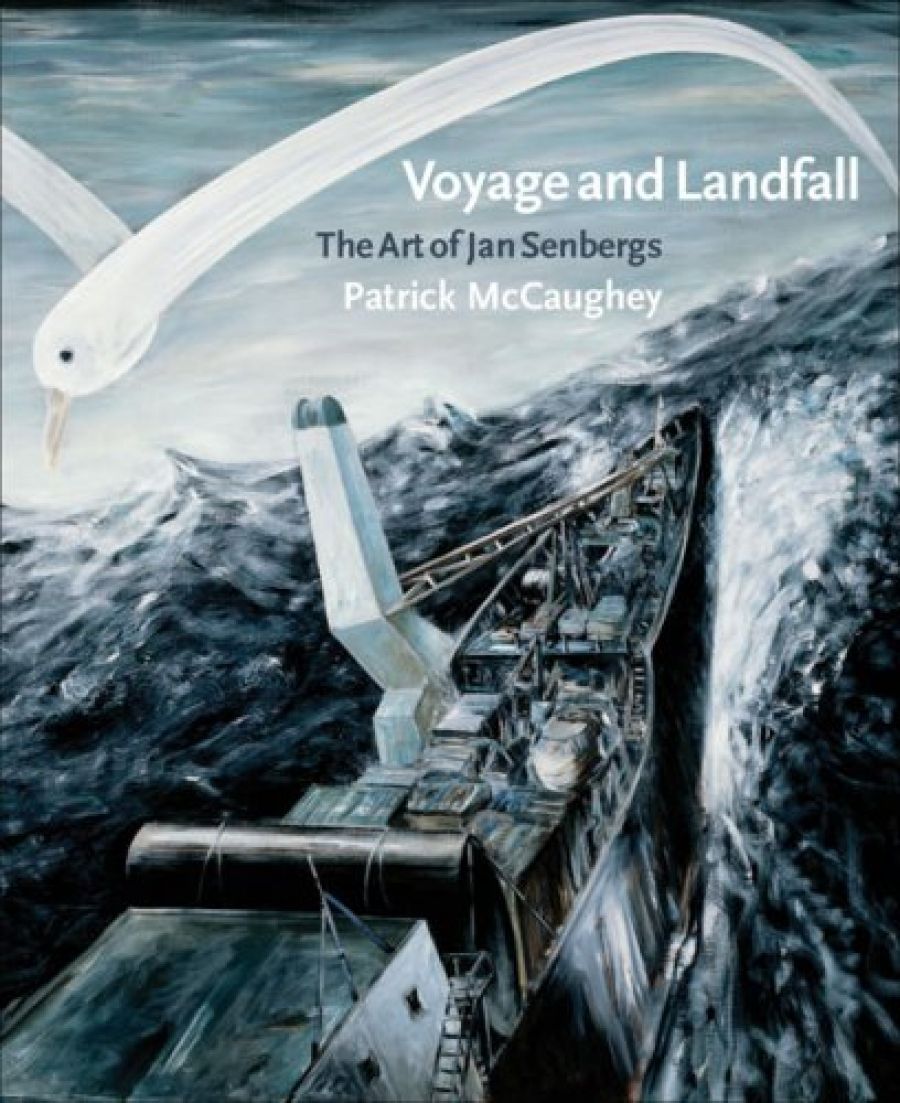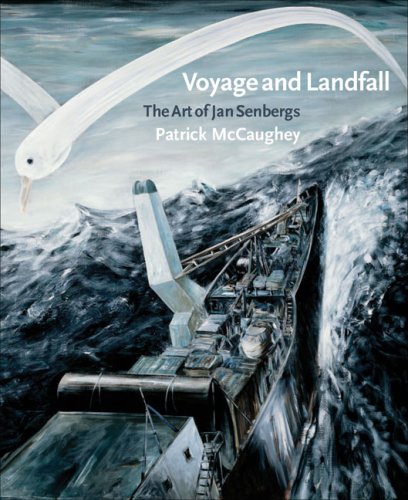
- Free Article: No
- Contents Category: Art
- Review Article: Yes
- Article Title: Senbergs country
- Online Only: No
- Custom Highlight Text:
Jan Senbergs’ art is not easy to like. Sombre, brutal, austere in colour, it nevertheless represents one of the most sustained meditations on the industrial landscape in Australian art. Patrick McCaughey, well-known gallery director, academic and critic, has written about the artist and his work in a way that deliberately blurs biography, autobiography and visual critique. The result is an engaging and unusually meticulous account of the evolution of an artistic career, documenting the emergence of ‘Senbergs country’ as a force in the Australian aesthetic imagination.
- Book 1 Title: Voyage and Landfall
- Book 1 Subtitle: The Art of Jan Senbergs
- Book 1 Biblio: Miegunyah Press, $59.95 hb, 246 pp
- Book 1 Cover Small (400 x 600):

McCaughey has his theories, but they are embedded in visual analysis. Unimpressed by current cultural theory, he asserts the importance of the singular artist and the autonomy of art. His perspective, partly influenced by the seminal art critic of the 1960s, Clement Greenberg, becomes apparent in his direct response to the works. Writing about Senbergs’ paintings that respond to the American ‘industrial sublime’, he describes the artist’s need to ‘match the intensity of the experience blow for blow on the canvas’. As Senbergs recaptures experience in the act of painting, so McCaughey reactivates the work for the viewer, matching its physical presence with verbal nuance. This experiential emphasis is combined with a search for Senbergs’ complex iconography. Visual sources and comparisons abound: Beckmann, a Shinto temple complex and, most interestingly, the eighteenth-century architects Boullée, Ledoux and Lequeu. In addition, he reveals that much is derived directly from reality, as illustrated in the artist’s own photographs of bleak and forbidding sites.
McCaughey portrays Senbergs as a stubborn and isolated ‘maverick’ artist. Unperturbed by the now distrusted idea of the artist as genius, McCaughey usefully contextualises the myth with a lively evocation of the artist’s sociability, strategic career moves, capacity for networking and, most importantly, long-standing friendships. Indeed, at times it seems that Senbergs’ life is a party, a series of convivial sparkling encounters – and here we suspect a large dose of McCaugheyism. Yet who would deny the importance of ambience and social encounter in the production of art, with key roles played by artists and taste-makers such as Len French, Roger Kemp, Hal Hattam, John Walker, and, no doubt, McCaughey himself?
Effectively a study of artistic survival in Australia from the 1960s on, the book provides direct accounts of the role of travelling prizes, government grants, artist-in-residence programmes, private and public gallery politics, and the vicissitudes of expatriate experience. Moreover, the confluence of McCaughey and Senbergs in this publication represents an important historical nexus; both playing significant roles in Australian culture during the 1960s and 1970s, a time of rapid expansion of the arts, underscored by major social change. It would be useful, however, if the context for Senbergs’ current position was assessed more fully. How does a figurative painter maintain the efficacy of his or her medium in the context of new media?
The idea of ‘voyage and landfall’ is poignantly appropriate, reflecting on Senbergs’ primal experiences, leaving his birthplace Latvia amid the trauma of war, witnessing his father’s horrific death, and arriving on the shores of Australia, a place of harsh alienation but, finally, of consoling securities. These memories are conjured up with tactful empathy and convincingly fed into interpretation of the works. In a key image entitled ‘Landfall’ (1994), McCaughey views the bizarre scaffolding of cargo-like objects on the ship’s deck as icons of arrival in a new land.
The trauma of Senbergs’ early experiences and his continuing sense of dislocation have predisposed him to a grim view of reality, a new version of dark, satanic mills in which human activity spoils and degrades the natural world. While his more recent Otway Ranges landscapes strike a celebratory note, the tenor of Senbergs’ work remains bracing. This book leaves us in no doubt that the major contribution of his art is in rigorous draughtsmanship with breathtaking, at times surreal, spatial effects. While it is not McCaughey’s intention to develop a new theory of art out of Senbergs’ work, the astute insights of his prose succeed in bringing the reader closer to its direct experience ‘blow by blow’.


Comments powered by CComment